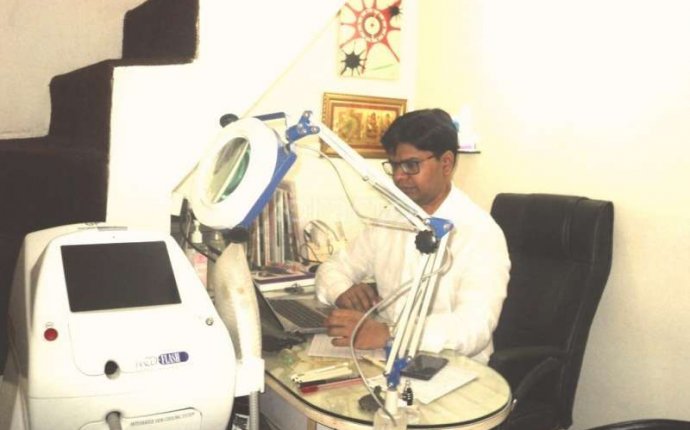
Slip disc Treatment in Ayurveda
A back pain that won’t go away, discomfort around your neck and immense fatigue that comes with doing the smallest of bending movements. If you notice these symptoms you are probably suffering from a slipped disc. To help you understand the condition and the holistic treatments available for it, Here are excerpts from his book.
ine in which a tear in the outer, fibrous ring of an inter-vertebral disc allows the soft, central portion to bulge out and cause nerve root compression. I get many cases of slipped disc where patients don’t even realize the severity of their condition. They come complaining of an ache in the neck ranging from mild to acute pain. It is only when the pain extends to other parts of the body that such patients realize the severity of the condition. What they had previously dismissed as a sign of stress and ageing is actually a more serious condition that needs treatment. In most of these cases, the cause of the problem turns out to be a herniated disc in the cervical vertebrae which presses on the spinal nerve, thus causing pain.
Causes
Factors that lead to a slipped disc include ageing with associated degeneration, loss of elasticity of the discs and supporting structures, injury from improper lifting (especially if accompanied by twisting or turning), and excessive strain forces associated with physical activities. (Read: Diagnosis and tests for back pain)
Common symptoms
Symptoms of a herniated disc can vary depending on the location of the herniation and the types of soft tissue that become involved. They can range from little or no pain—if the disc is the only tissue injured—to severe and unrelenting neck or low back pain that will radiate into the regions served by affected nerve roots that are irritated or impinged by the herniated material. (Read: Lower back pain: Why you shouldn’t ignore it)
Prevention
Prevention of slipped disc can be achieved by taking care of the following:
Exercise: Core-muscle strengthening helps stabilize and support the spine. Check with your doctor before resuming high-impact activities such as jogging or tennis. Regular exercise can improve the overall strength and tone of the supporting muscles and structures. Low back exercises are particularly important to prevent recurrent back injury.
Maintain good posture: Good posture reduces the pressure on spine and discs. Keep your back straight and aligned, particularly when sitting for long periods. Lift heavy objects properly, making the legs and not the back do most of the work. Use proper techniques while performing strenuous exercise. The worst possible combination of activities for spine is heavy lifting while bending and twisting simultaneously. (Read: Top 5 bad postures that can affect your health)
Maintain a healthy weight: Excess weight puts more pressure on the spine and discs, making them more susceptible to herniation. Use of a spine brace during heavy lifting is advised. Its use is to keep back straight and encourage proper lifting technique.
Holistic approach
Back pain being a very common disease in women, can be tackled very well with a holistic
approach. Though this is a purely physical condition, treating it holistically gives better and long lasting results. Through the evaluation, we try to assess the patient’s posture and habits. Treatments to correct the damage to the tissues and to enable the repositioning of the disc are done. This is followed by treatments to strengthen the muscles and the tissues. Simple changes in posture, reassessing your habits, and right movements help.
Homeopathy
Internal homeopathic medicines like Ruta, Hypericum, Arnica, Rhus Tox etc. help in relieving the pain. Constitutional homeopathic medicines help in addressing the problem from the root cause.
Naturopathy
Naturopathic treatments like wax therapy, hot mud packs, hydrotherapy fomentation, Infra-red light treatments, pelvic packs, spinal baths, and acupuncture help along with other treatments.
Ayurveda
The strength of Ayurveda in the area of spinal ailments is globally appreciated. Since it addresses the root cause of the issue, the results are better than surgical procedures. Ayurveda holds that the herniated disc is a result of vitiation of the three principal ‘doshas’, especially theVata. (Read: Understanding Ayurveda: Know thy Doshas)
Treatment in Ayurveda is aimed at restoring the equilibrium through correction of the underlying functional in-equilibrium. The treatment comprises of Elimination (Sodhanam) of the accumulated toxic products and metabolism of the disease process, Pacifi cation (Samanam) and correction of the entities responsible for altered functioning, and Rasayanam (Rejuvenation) of the bodily tissue, to regain and maintain natural strength and vitality. Therapies like Abhyanga, Nasyam, Patra Potala Swedam, Choorna Swedam, Pizhichil, Shirodhara, Kadeevasthi, Greevavasthi, Navarakizhi, and Vasti are done as per the need and condition of the patient. These therapies are directed towards relieving the inflammatory changes and herniation, releasing the spasms and nerve compressions in the affected area, strengthening the supportive tissues holding the spine/joints, nourishing the entire spine, and rehydrating the discs. Usually the treatment period varies between 3–5 weeks according to the severity of the illness.














